“The Snatch Test”—these words elicit “pure joy” for anyone who is preparing for their SFG or SFG II certifications. They tend to raise one’s blood pressure, increase their heart rate, and make their respiratory rate start to flutter.
Brett Jones has a wonderful and very effective way to train for the snatch test. And just like there are many ways to attack a challenge, this article presents an alternative preparation method—not only for the weekend, but also for the impending 300 seconds of fun!
My target plan for testing day is to do five sets of 20 repetitions each, with 15 to 20 seconds rest between each set. Doing this, you should finish the snatch test at around four minutes forty or forty-five seconds—so with 15 seconds to spare which is more than enough time to park the bell safely on the deck. What follows is training advice I use for many of my students with great success. If you follow it to the letter, it should work for you as well.
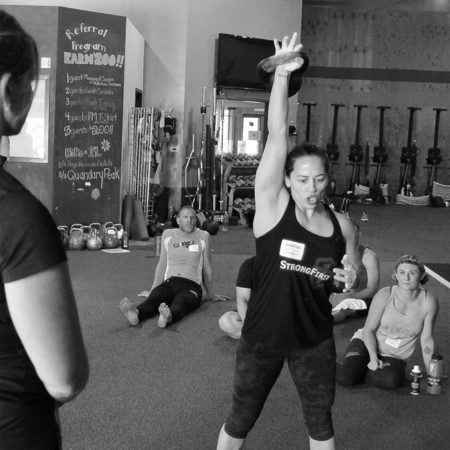
The Powerlifting Mindset for Snatch Test Training
One of the key tenets of this plan is that you will not be testing the full snatch test every week or multiple times in a week, as you work towards the certification. Using my powerlifting background, where I only max at the competition, I designed this plan to be methodical, not just with the training but also with your performance on the certification test day. When I teach programming during the kettlebell and barbell certifications, one of the things that I emphasize is to set parameters for the training cycle so the student knows what to do throughout the cycle. If you cannot abide by the rules, pick a different game.
Some of the great by-products of this training plan that will get you there is that your metabolism will increase, you may lose weight, and you will be able to eat plenty of ice cream/gelato the week after the certification to celebrate.
Prepare to Plan the Work
This plan assumes that your snatch and one-hand swing technique are good. In addition, it assumes that you are sufficiently strong to swing/snatch a kettlebell one weight above your testing standard. If your technique does not pass muster or you can’t swing/snatch heavier with good form, work on them before returning to this article for further guidance. You will also need two timers, preferably cooking-type timers or a big wall one and another timer.
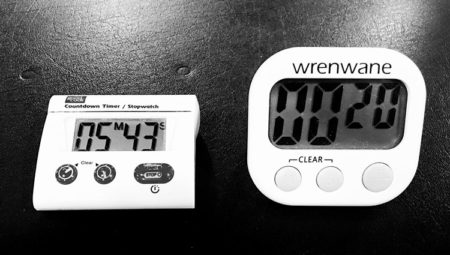
Here is what I want you to do:
Warm-up and then get your game face on. Attitude is part of this too, meaning go into this training with a can-do mindset. Remember what my good friend Yoda once said, “Do or do not, there is no try.”
Start a timer and perform 20 one-hand swings, 10 each arm with a swing-switch in the middle. Note the time on the timer when the kettlebell is safely parked on the ground after the 20th rep. The second timer is already set for 30-45 seconds which will be your rest time between sets. With 5 seconds left on the rest interval timer, go to the kettlebell and set up. When that timer goes off, start the second set, but this time perform 20 snatches, with 10 reps each arm with a swing-switch in the middle.
Once this set is done, look at the timer and record how long it took you to do those 20 reps. Start the rest timer.
You will alternate sets of one-hand swings and snatches three times for a total of six sets—three sets of swings and three sets of snatches. It will look like this:
START TIMER
20 one-hand swings: 10 right hand, swing-switch, 10 left hand, park. Note the time.
30-45 seconds rest
20 snatches: 10 right hand, swing-switch, 10 left hand, park. Note the time.
30-45 seconds rest
20 one-hand swings: 10 left hand, swing-switch, 10 right hand, park. Note the time.
30-45 seconds rest
20 snatches: 10 left hand, swing-switch, 10 right hand, park. Note the time.
30-45 seconds rest
20 one-hand swings: 10 right hand, swing-switch, 10 left hand, park. Note the time.
30-45 seconds rest
20 snatches: 10 right hand, swing-switch, 10 left hand, park. Note the time.
STOP TIMER and note the total time taken.
Total reps = 120, 60 swings/60 snatches
Record your total time to complete all 120 reps and the time to do each of the 6 sets. This is your starting line, where you see where you are. Also record which hand you started the first set of swings and snatches and change that every training session.
The goal is for you to do 100 snatches in under 5 minutes and be able to smile and walk tall afterwards. Yes, you will be tired and a bit short of breath, but you will not feel like a Mack Truck just hit you. Plus the snatch test is near the end of 3 days of learning, performing, lots of doing, and dreaming about kettlebells.
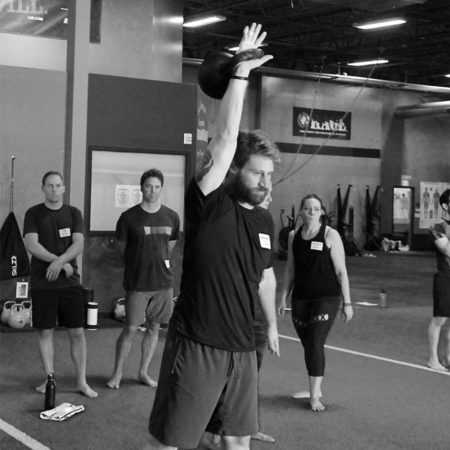
One added benefit of this approach is that you will get further practice your one-hand swing technique, which is one of the technique tests: 10 reps with one hand then 10 reps with the other hand.
You may have noticed that each set starts off with a different hand. The reason I program it this way is to ensure that you won’t develop any asymmetries when it comes to which hand starts and which hand sends the kettlebell to the other hand.
Plan the Work
Now for the planning. You will create an 8-10 week cycle, training three times per week, with a heavy day, a light/speed day, and a medium day. The heavy day will be a kettlebell one weight up from your snatch-size bell. Your light day will be one KB weight below your snatch-size KB. Your medium day will be your snatch-size KB.
For example, for WOMEN
If your snatch-size KB is 16kg, then your KB sizes will look like this:
Heavy day: 20kg (18kg is ok to start if you don’t have experience snatching a heavier KB, but eventually moving up to the 20kg)
Light day: 12kg (14kg is ok as well)
Medium day: 16kg—snatch size
For MEN
If your snatch-size KB is 24kg, then your KB sizes will look like this:
Heavy day: 28kg (26kg is ok to start if you don’t have experience snatching a heavier KB, but eventually moving up to the 28kg)
Light day: 20kg (22kg is ok as well)
Medium day: 24kg—snatch size
With the light day, keep your rest periods closer to the 30 seconds range whereas on the heavy day, go ahead and take the full 45 seconds of rest.
An advantage of the heavy/medium/light training days is that you will get accustomed to having heavier than your snatch-size kettlebell above your head for multiple reps and on the light day, moving the KB really fast on the descent when using the lighter KB. Both of these side benefits will immensely help your overall kettlebell training.
With the rest times between sets, especially as you start to decrease the time to 15-20 rest, you will become short of breath as you go into oxygen debt for a short time. Work on your recovery between sets and slowing your breathing down. It may be hard to do, but you will thank me after the certification. Remember—no one has ever died while performing a snatch test at a certification.
It is also important to start your next set when the rest timer goes off. Giving yourself a few extra seconds per set after the beeping adds up. For example, only three extra seconds per set adds 12 extras seconds at the end! Ouch!
On the heavy and medium snatch days, I strongly recommend that you start your training session (after warming up) with the snatch test training as you will be fresh and not tired. I realize that by the time you take your snatch test at the cert, you are no longer fresh. But in your training, this allows you to get it out of the way. Once you are done the test training, make sure you take at least 5-10 minutes of rest before you continue with your other training.
Work the Plan
The chart below is an example cycle for the above training:
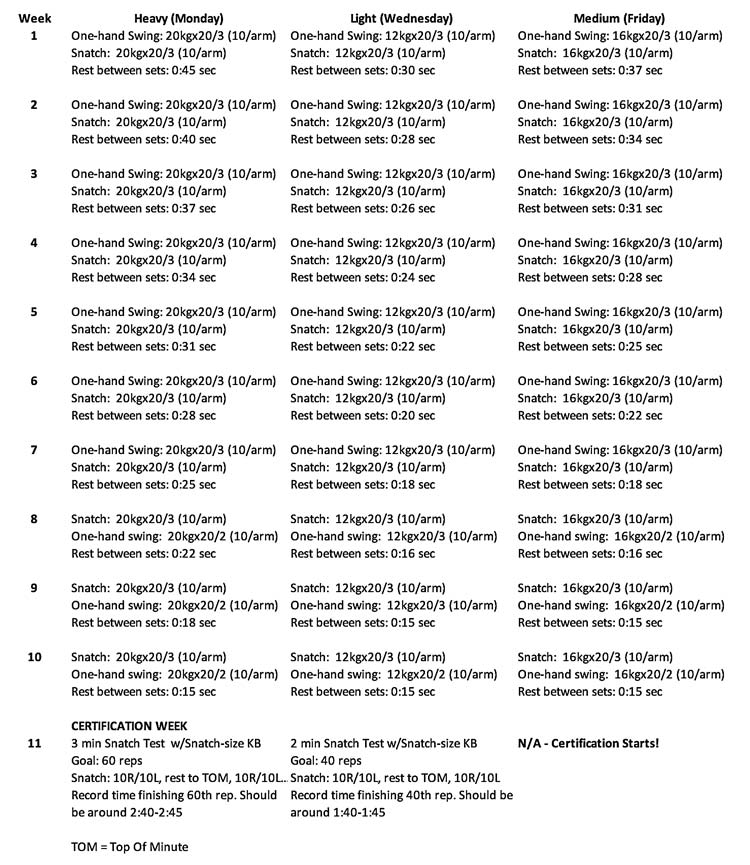
During the 8-10th weeks, you will make a change in the training and the order of exercises. You will now only do five total sets, but with three sets of snatches and two sets of swings. The order will be snatch, swing, snatch, swing, snatch. Continue to record the overall time it takes to finish all 100 reps. By the end of the 8th week, you should be at 5:00 minutes or below for all the medium and light days, with no more than 5:20 for the heavy day.
Also note that as the weeks progress, your rest time is decreasing. This is to get you used to smaller rest periods and to make you acutely aware of recovering between sets. Make sure you aren’t doing anything other than recuperating. Train as if you are at the certification performing the snatch test. It also gets you used to being mildly oxygen deprived. As I tell my students, learn to embrace the suck.
Certification Week
The 11th week is test and certification week. On your former heavy snatching day, do a three minute/60 rep snatch test with your snatch-size KB and all the planned test-day protocols. Your main goal is to achieve 60 reps. With taking 15-20 seconds between rounds, you should be able to finish around 2:40-2:45. On your light day of this week, perform a two-minute snatch test with the goal of getting to 40 reps. Your technique and protocol for taking the Snatch Test a few days later is now ready!
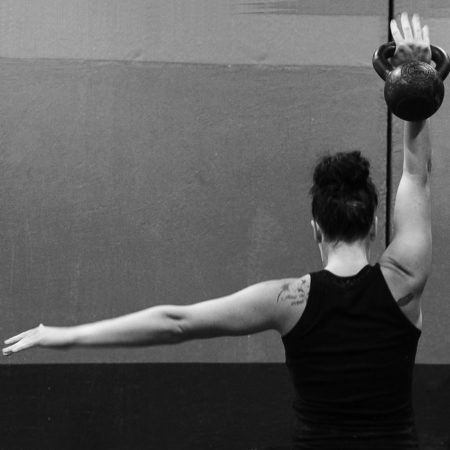
Final Details for Successful Training
- Before you start this snatch test training, make sure your swing and snatch techniques are good. You will not be allowed to snatch 100 reps with bad form.
- Keep your calluses trimmed, but not completely shaved off.
- All three days of training per week are important and necessary.
- Use chalk early in your training—magnesium carbonate is your friend.
- Learn to open your hand at the top of each rep. This will decrease the overall stress on your finger and wrist flexors by activating their antagonist muscle, the extensors. This will be especially evident in the later parts of the snatch training/test.
- Work on actively descending the kettlebell from the lockout position. Upping that speed decreases the overall time it takes to do 20 reps of swings or snatches. Your eccentric speed here counts when doing 100 reps. Think fast!
- Have someone call out when there are 5 seconds to go before the top of the minute and when to start the set at the cert and possibly in the gym to keep you on track.
- During week 11, start at the top of every minute for both your three minute and two minute tests to see where you are at in regards to the length of time to do 20 reps and to practice your timing for the actual snatch test.
- Work on getting your sets of swings/snatches to take no more than 40-45 seconds each. This will ensure you have at least 15-20 seconds of rest after each set.
This plan, if you work it as described above, will help decrease your stress and mental anguish before and during the cert. When an athlete is ready for an intense athletic performance, the amount of mental stress that they have decreases and they perform as they have trained. The same words apply to the kettlebell student who takes the proper time to prepare for the SFG certification, namely the Snatch Test.
The words of Vince Lombardi, former coach of the Green Bay Packers football team, ring loud and very true here: “The harder you work, the harder it is to surrender.” Now go make the Snatch Test your friend!
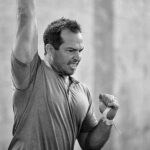


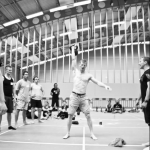

Wish I had seen this amazing plan sooner! I’m coming down to the Tampa SFG1 at the end of the month and I’m right on the edge of the weight class for the 24kg and 28kg. It’s amazing how much harder the 28kg snatch test is! Training hard with the 28 but also cutting those last two lbs so I won’t have to worry about it.
Hi Doc,
Would advise running this as a “standalone” practice? If not, what would you recommend as a guide if someone wanted to add other training to this plan?
Should we be trying to get the time it takes to do 20 reps (and total time for 120 reps) to go down over time? Or just the rest periods?
Sean you want to get both the 20 rep time and the total time down. That will get you more rest time between the 5 sets of 20 reps. Enjoy!